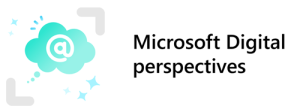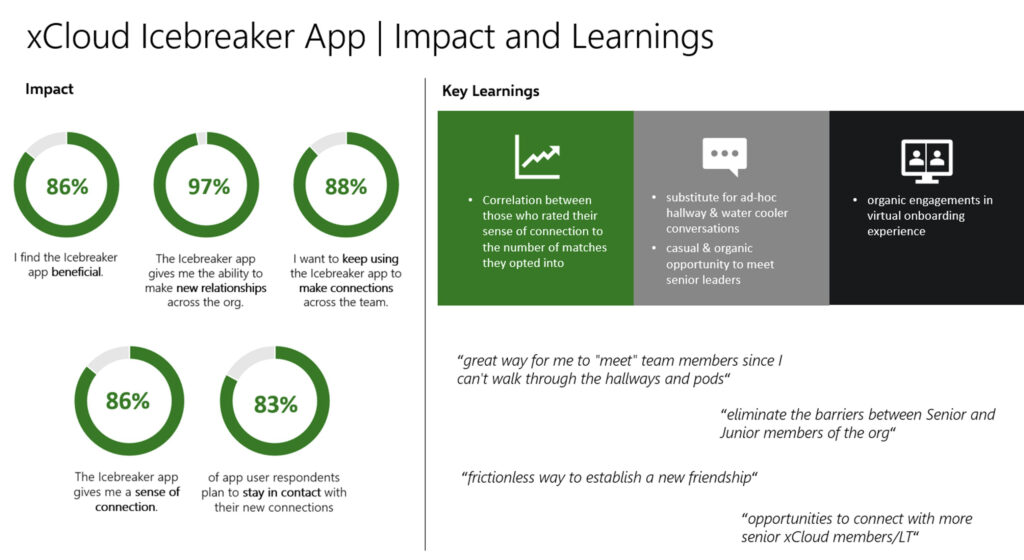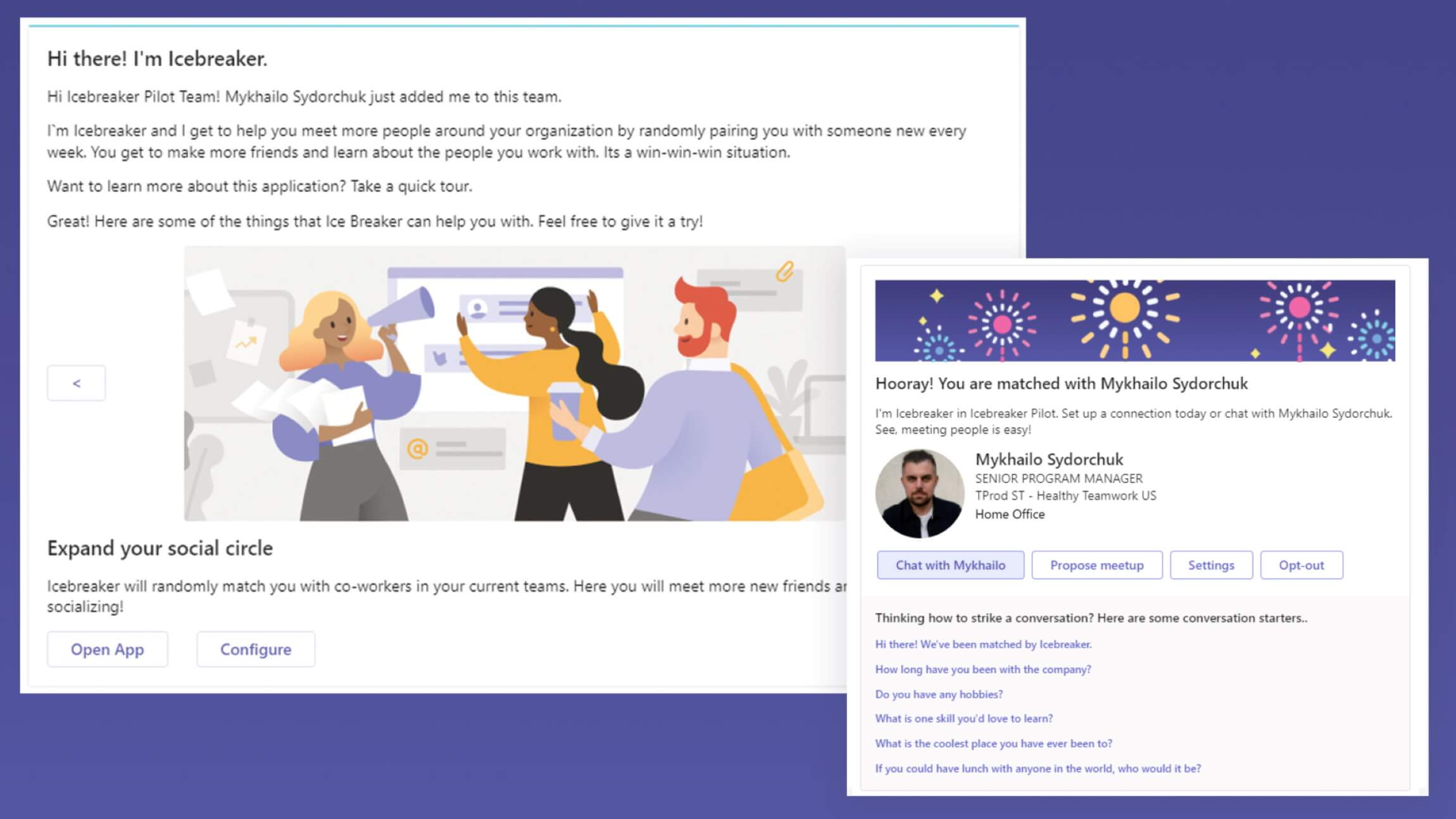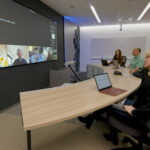 Since Microsoft Teams came on the scene a little over five years ago, it has become so much more than the “chat-based workspace” it was originally intended to be. We now know that hybrid work would just not work without Microsoft Teams! It has become the all-encompassing container for collaborative workflow experiences, allowing us to host inclusive meetings, work together asynchronously with global teams, and make sure everyone has access to the apps, resources, and information they need no matter where they are in the world.
Since Microsoft Teams came on the scene a little over five years ago, it has become so much more than the “chat-based workspace” it was originally intended to be. We now know that hybrid work would just not work without Microsoft Teams! It has become the all-encompassing container for collaborative workflow experiences, allowing us to host inclusive meetings, work together asynchronously with global teams, and make sure everyone has access to the apps, resources, and information they need no matter where they are in the world.
But one of the areas where Microsoft Teams has not received enough credit is the way in which it has helped ease several gaps created by the physical distance and missing connection brought on by remote-only or hybrid work environments.
As an employee who started at Microsoft during the pandemic and works 100 percent remotely, Microsoft Teams is the sole product that has afforded me the ability to cultivate strong relationships with colleagues that I have never physically met. The same types of “hour-long lunch date, over share about your personal life, and solve all the problems of the company” conversations that I had with teammates at former jobs pre-pandemic have still been possible thanks to the authentic connections that I have established via Microsoft Teams.

Now I understand that not all employers see these types of conversations as fruitful or productive, but I do know that all employers value the importance of a strong company culture and connection between colleagues. So how does one go about making these types of authentic relationships when they are brand new to a company and separated physically from the rest of their team?
Seeing a real need to help new hires successfully onboard during the pandemic, several organizations within Microsoft were looking for an innovative way to drive connection while removing the awkwardness of being the new employee and the pressures that come with having to be the first person to proactively reach out. So, some great minds within Microsoft Teams Customer and Partner Ecosystem, Microsoft Digital Employee Experience, and its India Development Center (IDC) got together to figure out a way to solve this.
“Working together with Microsoft Digital Employee Experience, we looked for a new way to enable and spark human connection within Microsoft Teams to help solve for some experiences that employees were missing due to the pandemic,” says Eu Nice Loh, a customer and partner ecosystem senior product manager on the Microsoft Teams product group.
Deploying the Icebreaker app
Icebreaker is based on a template created by the Microsoft Teams product group. This app is hosted in Microsoft Azure and backed by the Microsoft Azure Bot Framework that can be deployed to any company’s Microsoft Teams apps store. It aims to do the work of sparking connections by randomly pairing team members to help them build trust and encourage valuable, meaningful, long-term, and personal connections.
Microsoft’s Customer and Partner Solutions (MCAPS) organization was one of the first to adopt the out-of-the-box Icebreaker as part of their onboarding experience. When the pandemic first hit, they realized they would need to completely rethink the way they did their onboarding and sales training. Previously, the program had been a two-week immersion at Microsoft Headquarters in Redmond, Washington where new hires were flown in for onboarding, training, networking, and to build their social capital within the company.
Paola Medina, a business program manager with the MCAPS onboarding team, quickly got to work on finding new ways to foster connection within MCAPS new hire communities.
Even with hybrid work and people returning to the office, Icebreaker continues to be ranked high for MCAPS new hires as their favorite tool for connection, and we have found it to be more cost effective than some of our previous alternatives. In strained financial times, where many companies’ budgets for networking, morale-related events and internal company travel might be limited, the Icebreaker app is a great tool to help initiate connections that were once mainly nurtured by in-person activities.
—Paola Medina, business program manager, MCAPS onboarding team
“I started exploring for ways to help build engagement within MCAPS onboarding during this unique time and stumbled upon the app template for Icebreaker,” Medina says. “After some trial and error, I was able to figure out how to deploy the app, and we started using it with new hires worldwide as a way for them to connect and foster belonging. It has been such a powerful tool for bringing people together.”
Thousands of MCAPS new hires have accessed Icebreaker over the past few years, and they continue to use the app as a critical tool of engagement. Originally as a solution for remote work and office shutdowns brought on by the pandemic, it has continued to prove its usefulness, especially now during challenging economic times.
“Even with hybrid work and people returning to the office, Icebreaker continues to be ranked high for MCAPS new hires as their favorite tool for connection, and we have found it to be more cost effective than some of our previous alternatives,” Medina says. “In strained financial times, where many companies’ budgets for networking, morale-related events and internal company travel might be limited, the Icebreaker app is a great tool to help initiate connections that were once mainly nurtured by in-person activities.”
Not only did we have great team engagement, but it ended up fostering different types of conversations. You had people having casual discussions, in some instances with managers a few levels above them, that may never have happened without Icebreaker. It also led to becoming a great mentoring app for many.
—Timi Bolaji, software engineer, Xbox
xCloud, Microsoft’s Xbox cloud gaming team, has also utilized the Icebreaker app with much success. In fact, in a recent survey taken by xCloud employees, 97 percent of the participants said that the Icebreaker app gave them the ability to make new relationships across the organization.
Timi Bolaji, a software engineer with Xbox and a member of their Culture team, was the one to first introduce Icebreaker to his organization. He felt like the initial Icebreaker app was very approachable, and the documentation was particularly good, but for it to be successful for the xCloud team, he would need to make some technical changes that would better suit his teams’ needs and ensure usage.
“Not only did we have great team engagement, but it ended up fostering different types of conversations,” Bolaji says. “You had people having casual discussions, in some instances with managers a few levels above them, that may never have happened without Icebreaker. It also led to becoming a great mentoring app for many.”

This company-wide need to continue to foster personal connections in a hybrid environment brought together a team with the best suited skill sets to enhance the Icebreaker app. The Microsoft Teams product group set out to design a new experience that would feel fully native to Teams. Also, they provided insights into potential improvements through usage of the latest Teams software development kit (SDK) and Adaptive Cards features.
IDC, one of Microsoft’s premier centers for engineering and innovation, and others on the Microsoft Digital Employee Experience team united modern designs, enterprise-scale performance requirements, new technology capabilities, and Microsoft’s internal app compliance standards to create an improved version of Icebreaker.
Before we could deploy it, we needed to ensure that it could be used by multiple Teams simultaneously using a single set of Azure resources, and the backend service could handle the complex logic of pairing-up employees from different teams based on individual user preferences and Team settings. The scalability requirement drove the re-architecture of the application and broke it down into multiple micro-services, so now the app can be installed by any team in the company.
“In addition to making these changes, we had the opportunity to validate our approach with internal users who had already used Icebreaker and iterate on that feedback,” says Balasubramanyam Janakiraman, a principal software engineering manager leading IDC’s engineering team and overseeing the technical implementation of Icebreaker. “After four months of running the app in pilot, hundreds of teams at Microsoft are now using the new and improved version.”
What we learned as Customer Zero
From all the internal employee usage of the Icebreaker app has come great insight and response. For instance, Medina was instrumental in helping the Icebreaker product team improve the app based on the collective feedback she received from the MCAPS organization.
Some of the top recommendations for improvements included:
- Pulling profile data to present on the app card when matching occurs
- Feature to adjust scheduling, frequency, and matching for Team Owners and Team Members
- Improved messaging, language, and user experience within the App
- Incorporating conversation starters to the app when matched to ease connections
- Ability to modify time options for the “pause matching” feature

“It’s been a real collaborative effort between us, IDC, the Microsoft Teams product group, and our internal customers to get the Icebreaker app where it is today,” says Mykhailo Sydorchuk, a Teams productivity senior program manager with Microsoft Digital Employee Experience. “Through the feedback we have received from our employees, we’re able to improve the app and make it even more useful for cultivating strong connections and helping solve the gap created over the past few years.”
The Microsoft Digital Employee Experience team takes our mission to power, protect, and transform Microsoft very seriously. Part of that responsibility is ensuring that Microsoft employees can thrive in a flexible hybrid work environment. As Customer Zero for many products and services, our team obsesses over every aspect of an employee’s experience. Finding ways to better our culture through connectivity and strong relationships is all part of that commitment.
Microsoft Teams will continue to play an integral role in helping our employees and customers connect, collaborate, and explore for many years to come. Innovations like the Icebreaker app are just a small indication of what is still yet to come for Teams as we prepare for many advancements that will continue to enable deep connections within many dimensions.
Are you a customer wanting to learn more about the Icebreaker app in Microsoft Teams or how you and your organization can use Microsoft Teams to foster culture and connectivity? Please go to: https://github.com/OfficeDev/microsoft-teams-apps-icebreaker
Also, if you want to learn more from Paola Medina on her experience as a Microsoft employee and the importance of building community with the Icebreaker app, check out this video.

- Check out these five ways Microsoft Teams has transformed Microsoft.
- Explore advancing your meetings with the Microsoft Teams Meeting Guide.
- Learn how we’re transforming how meetings happen at Microsoft with Microsoft Teams Rooms.
- Discover Microsoft’s tips for staying productive in an evolving hybrid world.
Tags: digital transformation, Teams, WFH








